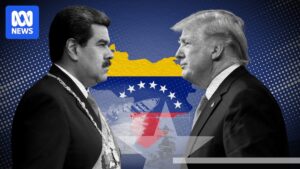
Researchers at the University of Gothenburg have made a groundbreaking discovery that milk from grey seals in the Atlantic Ocean may surpass human breast milk in nutrient quality. Their analysis revealed that seal milk contains approximately 33 percent more sugar molecules than breast milk, many of which are unique. This finding could revolutionize the development of infant formula, offering enhanced nutrition for babies.
The study, published in Nature Communications, highlights the critical role of seal milk during the 17-day suckling period of grey seal pups. During this time, the pups must rapidly develop their digestive and immune systems to survive the harsh conditions of the North Atlantic. The research confirms that the milk’s composition is exceptionally refined to meet these needs.
Unprecedented Diversity in Milk Sugars
Daniel Bojar, a senior lecturer in bioinformatics, explained, “Our analysis shows that grey seal milk is extraordinary. We identified 332 different sugar molecules, or sugars, compared to about 250 in breast milk. Two-thirds were completely unknown previously.” Some of these molecules had a previously unseen size of 28 sugar units, significantly larger than the largest known sugar units in breast milk, which are 18 units in size.
Oligosaccharides, a type of sugar found in the milk of all mammals, play a crucial role in the development and health of offspring. They protect against viruses and bacteria, help cultivate the body’s initial microorganism flora, and promote the development of the stomach and intestinal tract. Despite their importance, there are gaps in our understanding of milk sugar diversity among animals, largely due to limited studies on non-human mammals.
Dynamic Changes in Milk Composition
For the first time, researchers have analyzed the milk sugars of a wild mammal throughout its entire lactation period. “This is important because the composition of the milk changes as the calf gets older,” Bojar noted. Milk was collected from five wild grey seals off the coast of Scotland at various stages of lactation. Using mass spectrometry, researchers structurally characterized 240 of the sugars found.
The study also revealed that the composition of seal milk undergoes coordinated changes throughout the lactation period, similar to human breast milk. “The sugars bind to various proteins found in, for example, the immune system. We have tested the newly discovered sugar molecules on human immune cells and found that they can regulate the cells’ response to various threats,” Bojar added. This suggests that wild marine mammals, exposed to extreme environmental stresses, have evolved complex milk to protect their rapidly growing young.
Potential Applications in Infant Nutrition
The research also identified several sugar molecules with potent properties against disease-causing bacteria. This discovery could lead to the development of new bioactive compounds for infant nutrition, infection control, and immune system support. In the future, these sugar molecules could be added to breast milk substitutes to enhance infants’ immune systems or even be administered to adults for gastrointestinal health.
“The study highlights the untapped biomedical potential hidden in understudied wild species. Our research group is the only one in the world to analyze milk sugars from these uncharacterized mammals using mass spectrometry in that depth. We have done this for ten different mammals, and we find unique sugar molecules every time. We will continue. We have milk from another 20 mammals in the freezer,” said Daniel Bojar.
Exploring New Frontiers in Milk Research
This research underscores the importance of exploring the biological secrets of wild species, which could hold keys to advancing human health. As scientists continue to uncover the complexities of milk from various mammals, the potential for new discoveries remains vast.
The implications of this study are significant, as it opens the door to further research that could transform infant nutrition and health care. As Bojar and his team continue their work, the scientific community eagerly anticipates what other secrets might be hidden in the milk of the animal kingdom.






